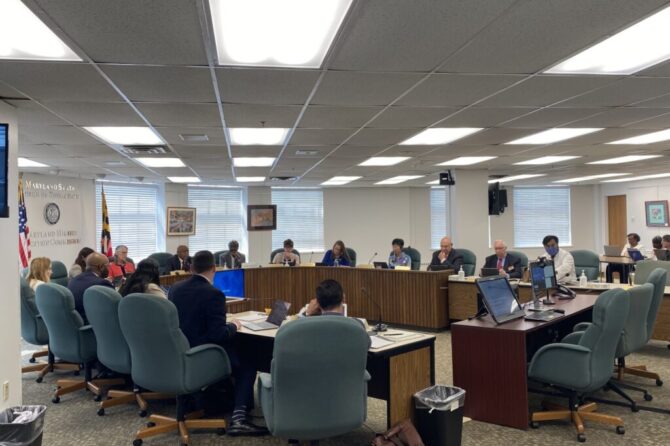After years of leading the state in job growth, Prince George’s County was among the hardest-hit localities in the Washington region as the pandemic took root, walloping the same communities suffering from illness and deaths with steep job losses.
More than 63,000 people saw their jobs in this D.C. suburb evaporate between February and May 2020, a Washington Post analysis found, showing that even one of the wealthiest majority-Black jurisdictions in the country would not be immune from the economic tumult borne disproportionately by communities of color.
Two years later, officials say they are on track to hit pre-pandemic employment levels before 2022 is out — a rate even some of the most optimistic county boosters are relieved by.
“Every time there’s a downturn, Prince George’s is always the slowest to rebound in the region. We’re the slowest to get our jobs back, the slowest to come back from those downturns. Everybody was afraid that would be the case,” said Angie Rodgers, Prince George’s County deputy chief administrative officer for economic development. “Thankfully, you know that hasn’t happened, and we’re actually rebounding faster than we thought we would.”
The resilience of the once economically lagging county has given leaders and experts high hopes for what Prince George’s can become as it seeks to pivot away from pandemic recovery toward long-term economic growth, competing with other rapidly growing hot spots in the region like Northern Virginia. County Executive Angela D. Alsobrooks (D) called it a time of “rising opportunity” at the county’s annual State of the Economy address this month, discussing plans for new projects — such as a bid for the FBI headquarters and investing in the Blue Line Corridor.
For Yulonda Wright of Capitol Heights, a mother of three whose job at a Starbucks disappeared in March 2020, opportunity looked like moving through fear of bringing sickness home to provide for her family. She found it at Charleys Cheesesteaks, which has remained open with the help of a county grant.
“As far as work, I was elated,” Wright said. “As far as, because it was still pandemic, I was still kind of scared.”
Leading the state before the pandemic
Nearly a decade ago, county officials intent on charting the economic future of Prince George’s knew what they were up against:a tax base that skewed residential and a history of being a place to live but not necessarily work.
In a strategic effort to change that dynamic, the county worked to luremore than 21,000 jobs between 2013 and 2018, surpassing neighboring Montgomery County and leading the state in job growth for six years.
“It was a real turnaround, beginning with a new strategic plan and a heavy focus on convincing businesses that this was going to be a location where they were going to receive a very receptive government,” said David Iannucci, president of the Prince George’s Economic Development Corp.
Iannucci and Rodgers agreed that the risk of losing all that growth made the devastation of the pandemic that much more alarming.
This article was posted by the Washington Post, to read the full article click here.
Photo: Kevyn Scott, owner of two Charleys Cheesesteaks locations, outside his store in Bowie, Md., on June 10. (Bill O’Leary/The Washington Post)










